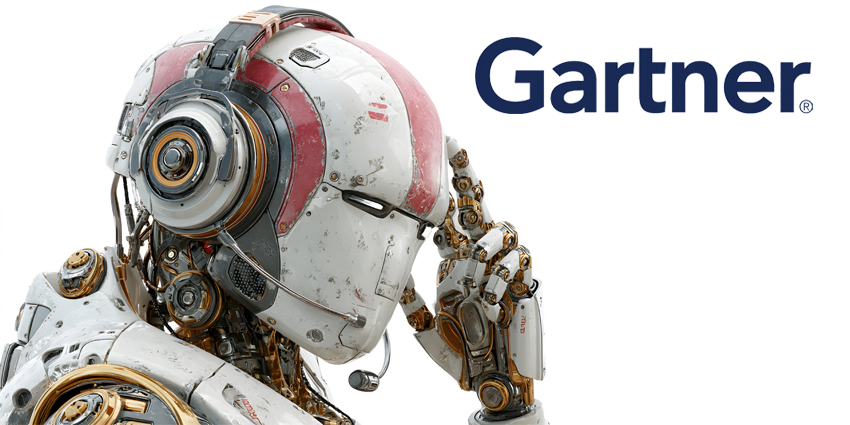Helpdesks are growing up.
From integrating natural language processing (NLP) capabilities to leaning on artificial intelligence to pre-emptively answer a query, the best helpdesks are no longer just FAQ pages or email forms. They have transformed into veritable knowledge centers that prove highly beneficial to both customers and agents.
And the advent of the metaverse is set to disrupt the world of customer experience even further, adding layers of complexity but also layers of opportunity to delight customers.
So, what have been the most impactful innovations, what are some of the most exciting helpdesk technologies currently available, and what does the future look like?
In this edition of the CX Today roundtable series, our panel of industry experts answer these questions and more, showing how their organizations are reimagining the helpdesk. They are:
- Eric Jorgensen, RVP, EMEA at Zendesk
- Eric Vermillion, CEO at Helpshift
- James Matthews, Country Manager, UK & Ireland at CM.com
Learn from their specialist insights below as our panelists answer thought-provoking questions and consider the hottest trends within the space.
How Has Helpdesk Software Landscape Progressed in the Past Ten Years?
Jorgensen: The advancement of technology over the past ten years means a helpdesk is no longer a static FAQ and email form on your website; it’s an effective frontline system for first-touch support and as valuable to your agents as it is to your customers. With the addition of AI, helpdesks can now be maintained through automation, with real-time, dynamic information rather than static, manually updated answers.
When harnessing helpdesk software, whether by browsing common questions or interacting with a chatbot, direct customers to articles that can answer their questions without needing to speak to an agent. For agents, the same automation can act as a knowledge base to help serve customers faster with recommendations on responses during a customer conversation.
The landscape has also progressed with more use cases for helpdesks. Just as AI can assist with customer inquiries, companies can use this software to streamline the employee experience and HR resourcing giving employees the tools to answer their own questions.
Vermillion: The technology transformation in the helpdesk landscape in the past ten years has been vast.
Consumers now expect nearly instantaneous answers and resolutions, whereas long waits were the norm a decade ago. Businesses have realized the value and ROI of investing in the maturation of their technology strategy (IBM, 2022). This means setting up their support tech stack to enable self-service and automation experiences that are both effective and delightful.
Smart chatbots have become a mainstay of support. They have come a long way since the first (somewhat) contextual chatbot, Google Now, was released in 2012 that had basic information about the user, like their location and time zone (Science Direct, 2020).
Modern channels like mobile apps have become an integral part of the customer support journey that brands need to ensure their helpdesk software can enable rather than forcing users to leave the app to call or email support and wait for a response. Additionally, agents should be able to easily orchestrate these tickets all from one place (Helpshift, 2022).
Matthews: With many teams still working at least semi-remotely, AI technology is ensuring that effective communication is taking place within and between teams.
Internal knowledge base chatbots are facilitating the onboarding process for remote workers. From learning about their new workplace to confidently dealing with customer service issues, the encyclopedic knowledge of processes and a vast library of information that chatbots possess ensures that the right information is at their fingertips in seconds. This reduces the need to pass queries up the chain of command, freeing up line managers’ time for more pressing issues.
Smart management solutions are making daily workloads more manageable, allowing agents to focus on resolving issues while technology responds to repetitive and simple customer questions with intelligent and personalized answers.
Often customers will use different platforms to communicate depending on various factors, such as where they are, what time of day it is, or which device they’re using. A conversational view across channels means that teams can quickly respond to conversational threads without missing a vital piece of the customer service puzzle, simplifying and streamlining communications across the board.
In Your Opinion, What Is the Most Exciting Innovation in the Helpdesk Space?
Jorgensen: Many once viewed the helpdesk as a tool to prevent customers from raising tickets by answering their questions without agent interaction. It’s exciting to see how ‘speed of resolution’ is being replaced by ‘quality of interaction’ in service teams – with the helpdesk as a jumping off point for customer conversations rather than a wall between customers and agents.
Businesses that foster collaboration between their sales and service teams find that customer service is no longer viewed as a cost center but as a source of profit with the opportunity to upsell, cross-sell and retain customers through every customer interaction. And when teams can share customer feedback, businesses can better meet their expectations and create new products that wow, as well as further improve their helpdesk to win over customers and encourage them to explore more of the online space.
Vermillion: With so many ways to engage and the complexity of problems increasing, the raw volume customer service demand continues to grow, and companies can’t just endlessly throw people at it.
Automation allows businesses to bridge the capacity gap that exists and, when done right, gives consumers much more ability to self-serve and do it on their schedule.
Matthews: Smart inbox management is increasing internal efficiency and boosting customer performance through many tools, including inbox zero, personal routing, and an SLA-driven omnichannel inbox.
In the context of an increasingly digitalized environment, customers have come to expect timely, informative responses to their queries.
Management tools that keep inboxes clean and clear aid task prioritization by giving agents a transparent overview of all conversations, indicating items that require urgent attention.
Traffic light color coding facilitates efficient workload management by indicating to agents how much time they have left to answer a question based on SLAs.
Advanced personal routing also streamlines the customer experience by automatically connecting the customer to the right agent. With options to set routing based on criteria such as skills, brand, store, or language, this technology ensures that an appropriate agent has direct ownership of a query, delivered straight to their inbox, providing customers with a personalized experience.
Which Current Helpdesk Trends Do You Find Most Exciting?
Jorgensen: The increasing adoption of AI in helpdesk management is very exciting. It’s becoming increasingly accessible to businesses without the need for a team of developers or data scientists to implement.
With AI integration, bots can help proactively resolve problems, deliver superior support experiences, and decrease churn. AI can take care of simple, low-value requests, granting agents more time to focus on situations that require more complex support and a human touch. In financial services, for example, customers may have difficult circumstances to discuss that require real empathy, or in the travel industry, tensions can run high around delays and cancellations.
If businesses invest in an integrated system from the very start, this will help reduce operational costs and optimize their CX strategy to drive revenue in the long term.
In Zendesk’s CX Trends 2022 research, 60 percent of consumers say they will likely become repeat buyers after a personalized shopping experience with a retailer, further increasing revenue.
Finally, AI can help learn from what customers visit the helpdesk for, such as delivery information. It could also discover how customers like to be treated or provide proactive recommendations for products or services. These may include next-day delivery memberships, which can raise customer satisfaction and add value to the business.
Vermillion: Companies can resolve consumer problems more quickly and effectively than ever thanks to conversational AI understanding what each customer types, classifying their intent, and considering context about their device and account information. With this information, the bot guides the customer down a personalized resolution path. If they are a VIP-level customer, the bot may even present them with special menu options or usher them directly to an appropriate agent.
Bots may also provide an immersive support experience across modern channels such as a mobile app, console, and the metaverse.
Matthews: The increasing use of Conversational AI is an exciting and rapidly evolving phenomenon. AI chatbots that intelligently respond to common customer queries help relieve the strain on customer service teams by automating simple, easily solved problems. In addition, the ability to seamlessly handover a query to a live agent, should it become too complex for the AI platform to handle, is paving the way for more efficient operations.
The increasing hybridization of customer service solutions demonstrates the considerable innovation taking place in this space. Combining non-human and human solutions can offer a ‘best of both worlds’ for the consumer.
Could You Give Us a Prediction for the Future of Helpdesk Technology?
Jorgensen: With more and more channels for customer engagement, there are many new ways for customers to discover brands. From voice searches to TikTok shopping links, brands can adopt new touchpoints along the customer journey as shopping channels change over time.
Businesses also need to start thinking about what their helpdesk looks like on these new channels. Take, for example, the metaverse. We have already witnessed fashion shows, concerts and sporting events in the metaverse, and commerce isn’t far behind in establishing itself and creating new CX opportunities.

The metaverse is all about immersion – once you’re in it, you don’t want to leave the platform. By providing an in-world helpdesk and conversational service, companies can better support agents to efficiently resolve queries at scale, without interrupting the experience.
Whether or not the Metaverse will offer the same level of disruption we’ve seen in the past, there is no doubt that it opens up a new world of opportunity that will be difficult to ignore.
In the near-term future, there is also the chance to have more self-sufficient helpdesks that study customer enquiries and identify blank spaces or errors in the information provided. Then, they may automatically generate new articles to plug the gaps.
Indeed, AI is already helping create content elsewhere, and it’s not long before it’ll become a standard part of knowledge base and helpdesk curation.

Vermillion: The future of helpdesk technology is the ability to provide an automated support experience that feels more like a high-end concierge. In tandem, personalized CX will become so finetuned It will support much speedier resolutions. For example, the experience with a customer’s preferred airline should consider their flyer status and provide personalized options when they need to make an adjustment.
If the customer uses a retail app, it should utilize their data to know what sizes they need, the clothing colors they picked in the past, and the status of my order.
Furthermore, the customer should never have to leave their experience to get support – whether immersed in a VR experience or utilizing a mobile app while travelling through the airport.
Matthews: A ‘customer first’ approach will soon come to the fore, based on the following predictions:

- Companies will likely take customer relationships to the next level, adjusting them to modern business models. The nature of the dynamic will change, with companies and consumers becoming ‘partners’. As a consequence, businesses will invest considerable time and resources on understanding the preferences, goals, and ambitions in the lives of their customers to improve CX.
- The increased use of customer data will accelerate the shift to proactive customer service. Focusing on identifying potential customer issues and resolving them before they emerge, through IoT and other technologies, will enable companies to start creating data and event-driven strategies to further proactive support.
- The lines between the physical and the digital world will blur in the upcoming years, facilitating seamless omnichannel journeys. In addition to ‘standard’ devices, consumers will communicate via chatbots, AR, VR, and wearables and on the channels they already use in their everyday lives. Customer communications will resemble chatting with a friend and businesses will remember what’s happening in a customer’s life, switching seamlessly from one channel to another to pick up the conversation where it left off.
Miss out on last month’s roundtable? Check it out here: Exploring Self-Service







